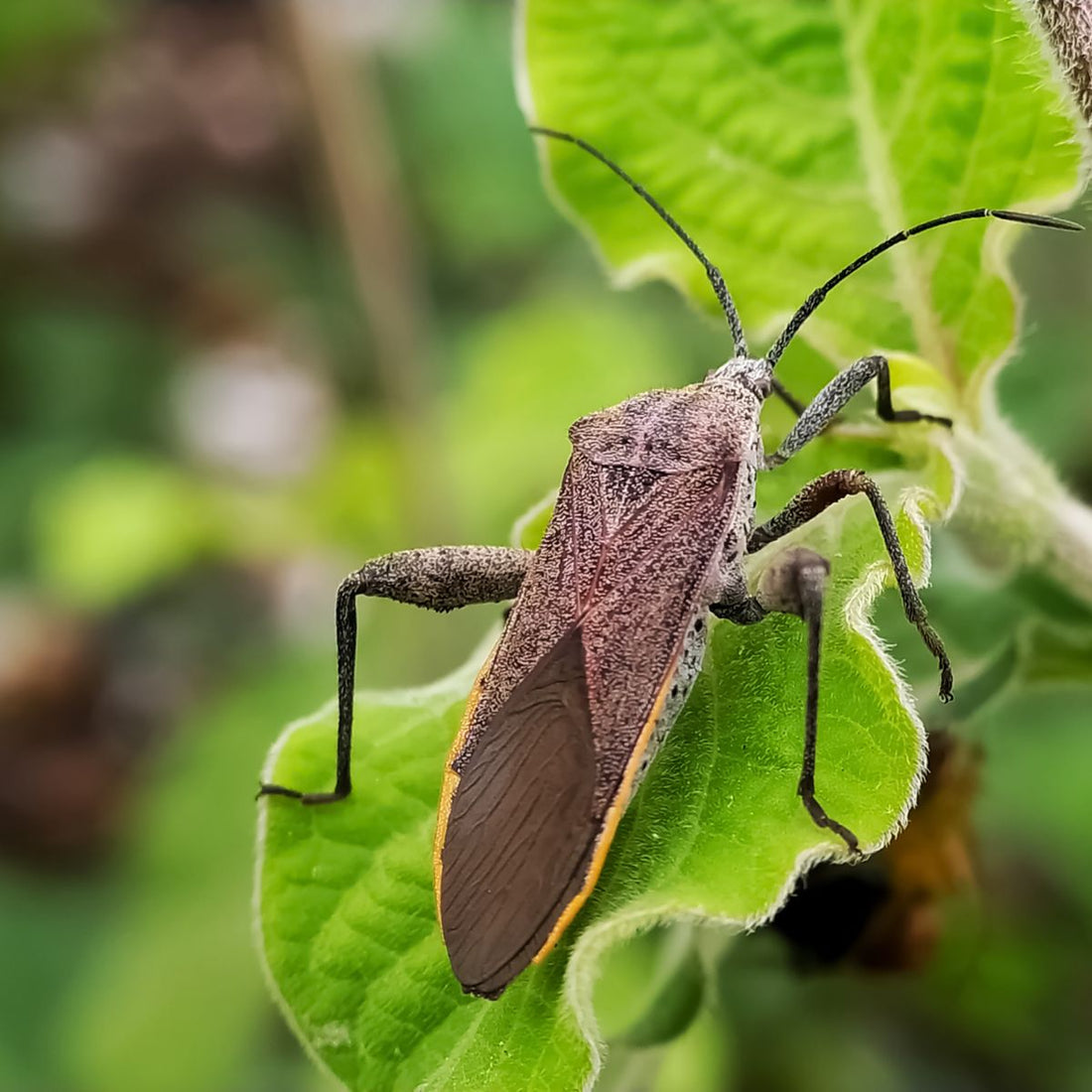For many gardeners, the squash bug (Anasa tristis) is a notorious adversary. With a penchant for decimating squash plants, these pests often wreak havoc in gardens, causing significant damage to vegetable patches. However, with the right identification methods, understanding of the damage they cause, and implementation of effective prevention strategies, you can protect your garden from these notorious pests.
What are Squash Bugs?
Squash bugs are infamous insects known for their destructive behavior on squash plants, including zucchini, pumpkins, and other members of the cucurbit family such as cucumbers, cantaloupe, and watermelon.
These pests present a considerable challenge to manage, particularly when they multiply in large numbers. They are common in North America and are known for their remarkable ability to fly, although they are often seen walking on plants.
Note: Squash bugs are often mistaken for stink bugs due to their similar appearance and the foul odor they emit when crushed. However, stink bugs are generally wider and rounder than squash bugs.
How to Identify Squash Bugs
Adult squash bugs are typically flat-backed, measuring over half an inch long, and are usually dark gray to dark brown in color. They sport orange stripes along the edges and undersides of their abdomen.
Young squash bugs, or nymphs, may exhibit light gray or light brown hues and have black legs. They are known for their swift movement and often congregate in groups on the underside of leaves.
The adult bugs overwinter in dead leaves, vines, under boards, and even in buildings. Around early June, they mate and lay small clusters of eggs on the underside of leaves, and the females continue laying eggs through mid-summer.
What Damage Do Squash Bugs Cause?
Squash bugs inject a toxin into the plant and drain the sap right out of it with their sharp, sucking mouthparts. The toxin causes yellow spots that eventually turn brown.
The damage impedes the flow of nutrients to the leaves and they wilt, dry up, and turn black, crisp, and brittle. In some cases, the leaves also exhibit ragged holes. Smaller plants may die from the infestation, and the feeding can severely affect young fruit.
One common misdiagnosis to watch out for is bacterial wilt, a disease spread by cucumber beetles, another squash pest. It's essential to correctly identify the bugs or eggs to implement the right control measures.
How to Get Rid of Squash Bugs
Early detection is paramount when dealing with squash bugs. The goal is to catch these pests before they mature into adults and become harder to eliminate completely. Here are some strategies to combat them:
Hand Picking
Hand picking is an effective way to control squash bug populations. You can fill a bucket with water and liquid dish soap and flick the bugs into the soapy water. Once the bugs are dead, it's safe to dispose of the water anywhere.
Egg Removal
Removing egg masses off the plants in the morning and later in the day can also help manage the infestation. You can simply scrape the eggs off the leaves with a butter knife and let them fall onto the ground, where beetles will eat them. Eggs hatch in about ten days, so it's important to check for them on a weekly basis.
Using Boards or Newspapers
Placing a board or pieces of newspaper in the garden at night can serve as a trap. During the night, both adults and nymphs congregate underneath the board. The following morning, squash them between two hard surfaces and dispose of them.
Regular Check-ups
Regularly inspect your plants, preferably daily. If there are no more than a few vines infected, continue collecting and destroying the bugs and crushing the egg clusters that you find on the undersides of leaves.
Using Pesticides
While pesticides are not generally effective in managing adult squash bugs, they can be used if you catch the infestation early in the season when eggs are hatching. The best time to apply pesticides is early morning or late at night (during minimum bee activity). Ensure that you spray underneath the leaves, where most squash bugs are found.
How to Prevent Squash Bugs
- Burn or Compost Old Squash Vines: In the fall, be sure to burn or compost old squash vines to eliminate any possible shelters for breeding and overwintering.
- Practice Crop Rotation: Crop rotation can help manage squash bug populations in your garden.
- Cover Squash Plants Until Blossoming Begins: Consider covering squash plants until blossoming begins. Remove the cover for pollination needs. There is typically only one generation of squash bugs per year, and you can avoid them by covering your plants for the first month of spring.
- Plant Squash Bug Repellent Plants: Plants like nasturtium and tansy can repel squash bugs and can be planted around your squash crops.




